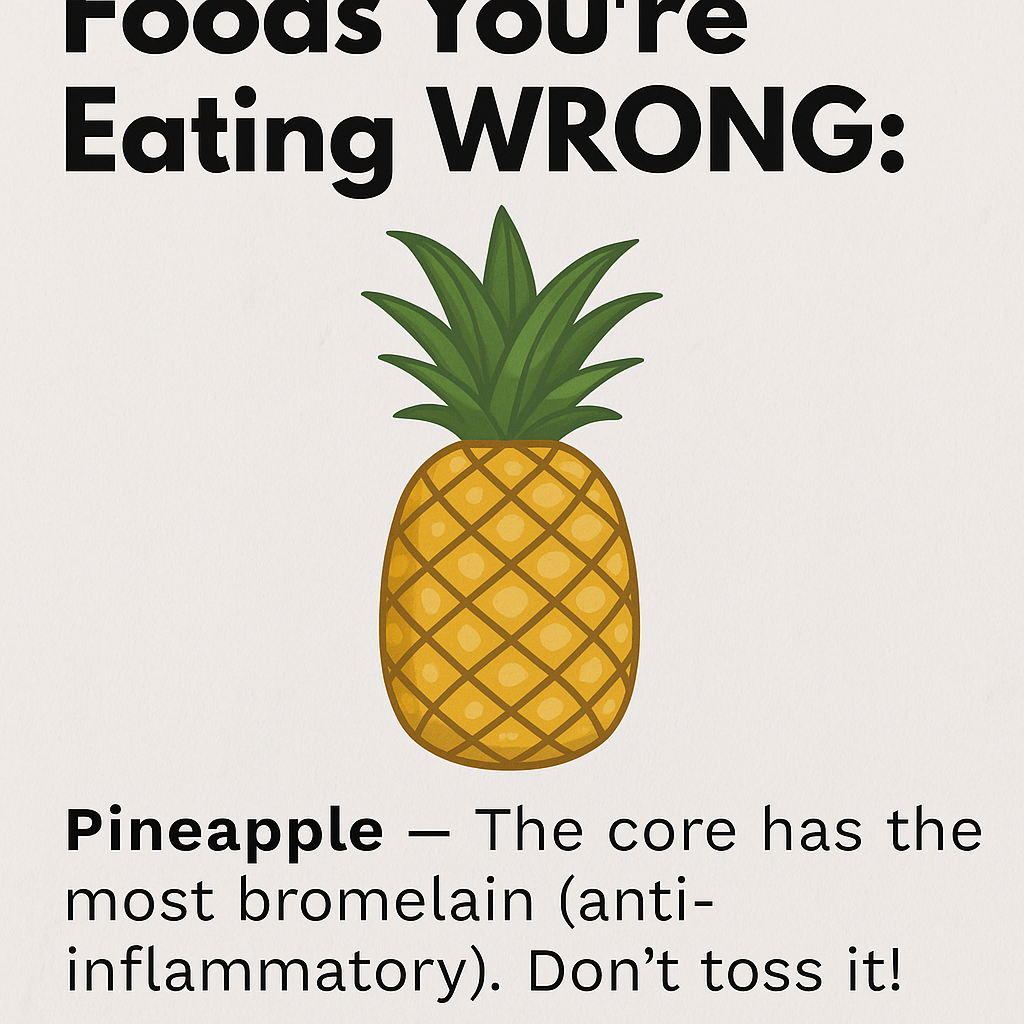10 Everyday Foods You’re Probably Eating the Wrong Way

You might be eating healthy—but are you eating smart? Many common foods lose their benefits due to small mistakes in how we prepare, store, or consume them. Here are 10 everyday foods people often eat wrong—and how to fix it.
1. Pineapple
Don’t throw away the core! It contains the highest concentration of bromelain—an anti-inflammatory enzyme that aids digestion. Just slice it thinner to make it easier to chew.

2. Mushrooms
Never wash mushrooms under water—they soak it up and lose nutrients. Instead, gently wipe them clean with a damp paper towel or soft brush.
3. Chocolate
Storing chocolate in the fridge ruins its flavor and texture. Keep it at room temperature to preserve its richness and smoothness.
4. Potatoes
Eating hot potatoes can spike your blood sugar. Let them cool before eating to form resistant starch, which is better for your gut and metabolism.
5. Green Tea
Over-steeping destroys the antioxidants. The sweet spot? Just 2–3 minutes. Any longer, and you lose the very benefits that make green tea so healthy.
6. Kiwi
The fuzzy skin is totally edible and loaded with fiber and nutrients. Just rinse it well and bite in—no peeling needed!
7. Cinnamon
Most cinnamon sold is Cassia, which can be harmful in large doses. Look for Ceylon cinnamon—the safer, true variety with more health benefits.
8. Bell Peppers
The cleanest way to slice a bell pepper? From the bottom. It’s less messy and avoids the cluster of seeds near the stem.
9. Garlic
Chop it and wait 10 minutes before cooking. This activates allicin, the compound responsible for garlic’s health-boosting effects.
10. Broccoli
Boiling broccoli destroys most of its nutrients. For max benefits, steam it lightly or eat it raw in salads and dips.
Conclusion:
Eating well is more than choosing the right foods—it’s knowing how to prepare and consume them for maximum impact. Small tweaks in your habits can make a big difference in how much your body benefits from your meals.




